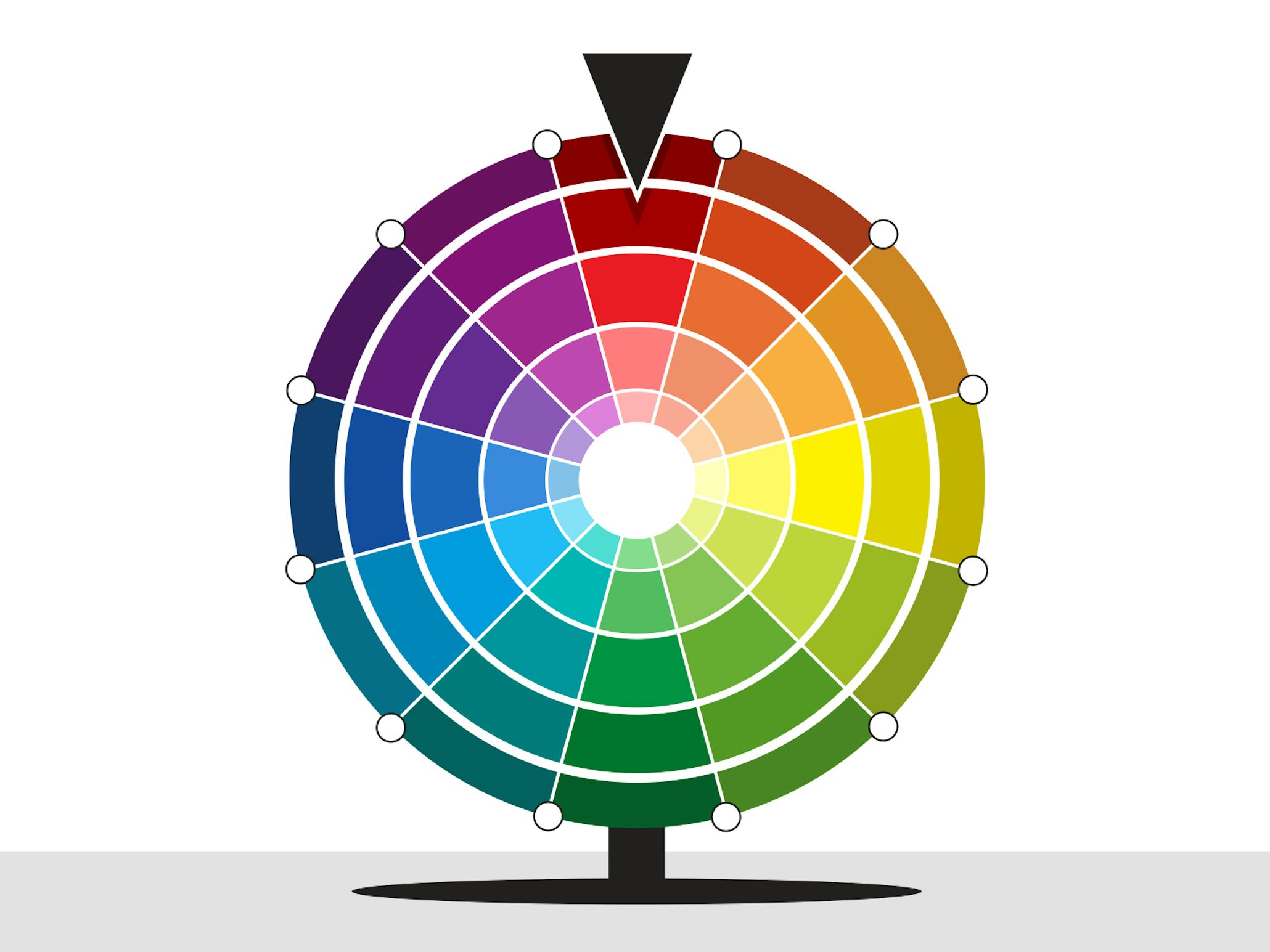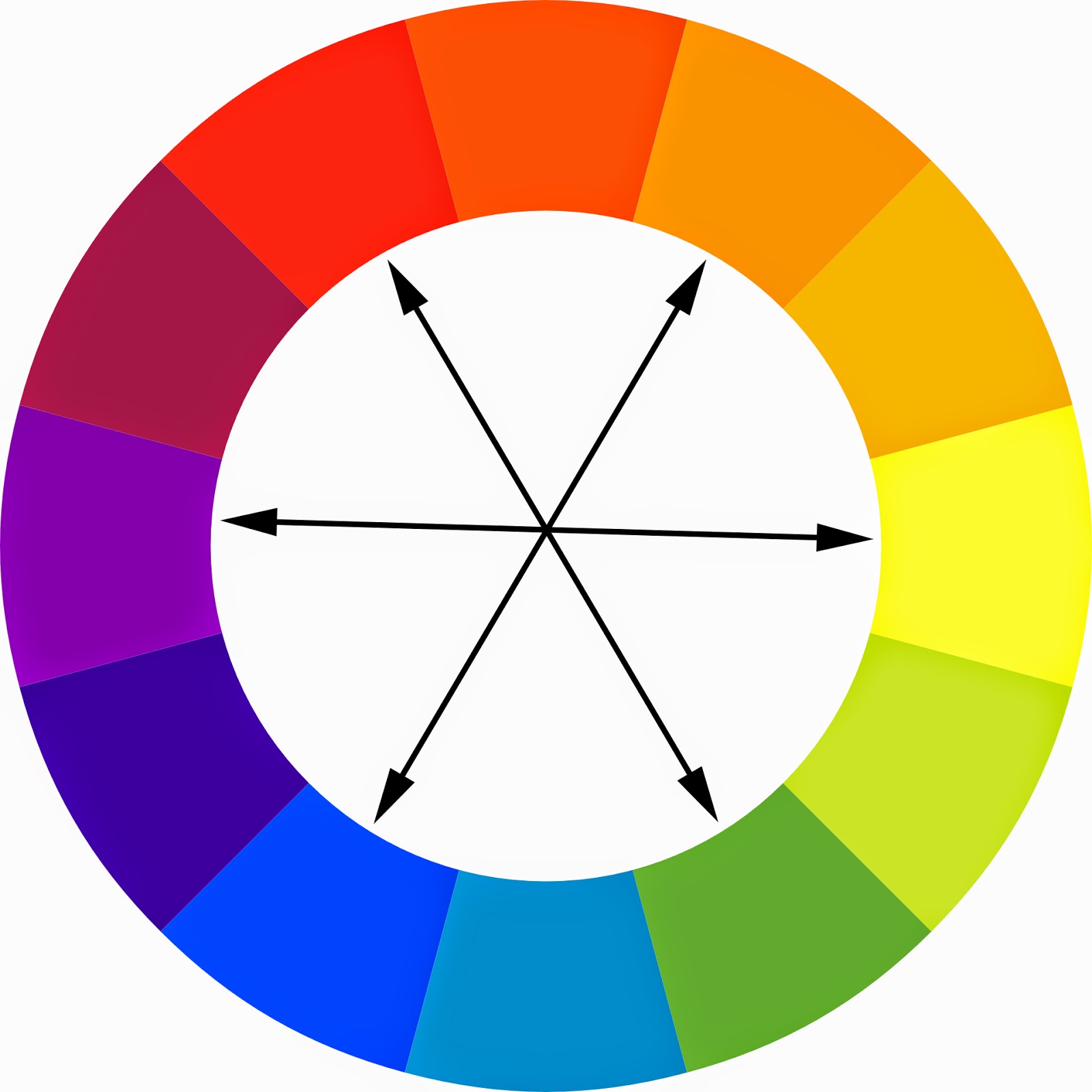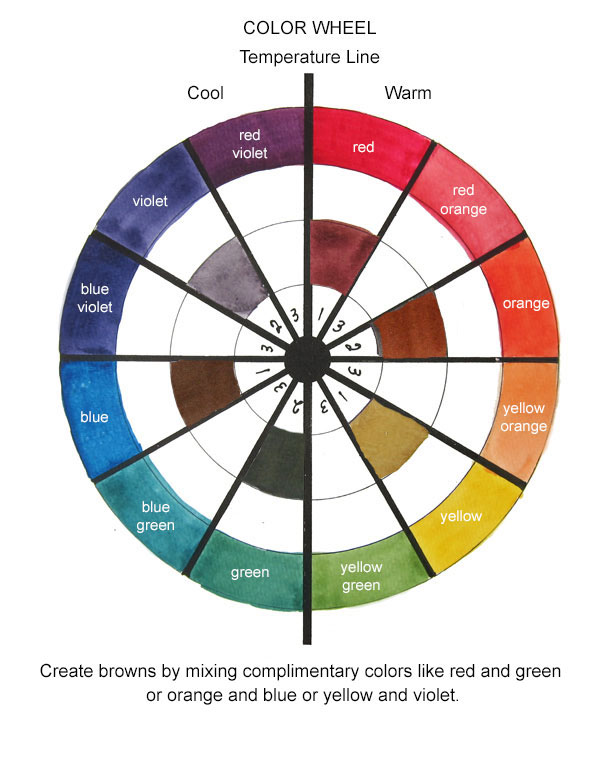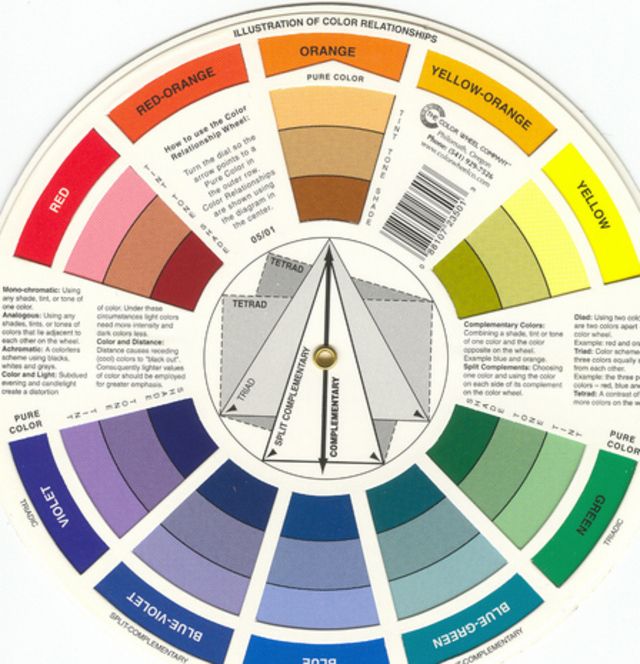
The Best 14 Brown Color Wheel Chart trendqflower
Brown is not featured on a traditional color wheel as it is what's known as a composite color—a color made of a mix of pigments, a blend of primary and secondary colors. It is considered a warm hue, along with red, orange and yellow and is noted as a deep shade of orange on modern color wheels. The Meaning of the Color Brown

a color wheel with the words choose your colors
An easy way to know which color harmonies match well. A color wheel shows relationships between colors. Adjust your color palette based on HSV and RGB parameters. You liked palettes. Export as json. Use our Color Wheel to find the perfect color combinations for your design.

How to Use a Color Wheel to Decorate Your Room
On the color wheel only one tint is shown for each hue. It is the color next to the hue and the tint is made to look like it is midway between the hue and white. Tone. A tone of a color is created when a hue is blended with gray; adding gray quiets or tones down a color. A hue mixed with any amount of gray is considered a tone.

Colors That Make Brown Color wheel brown, How to make brown, Colors that make brown
Top Spin the Wheel App features: Chat with other people spinning the same wheel. Unlimited wheels of fortune with unlimited labels. Big color library and ability to use custom colors. Wheel Store with thousands of wheels to download. Premade presets to easily create beautiful spinner wheels.

Create Impressive Interior Color Schemes With The Color Wheel Hair color wheel, Color wheel
In the RYB (red, yellow, blue) color model, the complementary color of brown is blue. On the standard 12-part color wheel, brown's complement is a vivid cyan blue. When placed next to each other, these opposite colors look particularly bright. Using blue to complement brown can be an effective way to add visual interest and vibrancy to a design.

Color Theory Complementary Colors and How to Use Them Make It from Your Heart
28 September 2022 by Proactive Creative Brown is not the most exciting color, but it's still an important and useful color. So, if you're wondering what the opposite of brown on the color wheel is, read on! One of the basic rules of color theory is that colors have complementary colors.

Color wheel brown aslpool
The color wheel was invented in 1666 by Isaac Newton, who mapped the color spectrum onto a circle. The color wheel is the basis of color theory, because it shows the relationship between colors. Colors that look good together are called a color harmony. Artists and designers use these to create a particular look or feel.

Colour wheel Tertiary Color, Complementary Colors, Color Wheel Brown, Colour Wheel, Brown Color
By Jessica Bennett Updated on November 16, 2023 The color wheel is a simple tool for picking paint colors and deciding which hues go together. Every decorative color combination can be defined by where it resides on the wheel, a diagram that maps the colors of the rainbow.

Color Theory Choosing and Blending Colors Effectively
The color wheel is a color mixing guide that helps to understand how colors work together. There's lots of different kinds and styles, but the basics of the colors on them are always the same. The colors always blend from one to the next, like a spectrum, except in a circle. There are three main ways to combine colors using a color wheel.

Color Wheel & Keys and Temperatures Louise Jackson Painting Classes
Grafixfather August 28, 2022 Color Theory Brown is not featured on a traditional color wheel as it is what's known as a composite color—a color made of a mix of pigments, a blend of primary and secondary colors. It is considered a warm hue, along with red, orange and yellow and is noted as a deep shade of orange on modern color wheels.

Primary color wheel brown plmeast
A color wheel for artists will sometimes have 24 colors and distinguish tertiary colors as the result of combining the secondary colors while mixing a primary color and a secondary color is called an intermediate color. These colors are also less radiant than primary or secondary colors as they contain some of each primary color.
:max_bytes(150000):strip_icc()/how-to-use-a-color-wheel-to-pick-the-right-color-palette-5663936-01-ab19a6e4fb4c44f182828884da1117f9.jpg)
How to Use the Color Wheel to Pick the Right Palette for Any Room
What Colors Make Brown On the Color Wheel? Brown is a composite color, meaning that it can be created by mixing red, yellow, and black pigments, or by combining orange and black (to effectively create a darker shade of orange). In an RGB additive color model, brown is created by combing red and green together.

Color Combinations Guide The Ultimate Cheat Sheet (2024)
A color wheel is a circle diagram that illustrates the relationships between different colors. Sir Isaac Newton developed the first color wheel in his 1704 book Opticks. Newton created an asymmetrical color wheel with seven colors—red, orange, yellow, green, blue, indigo, and violet. In 1810, Johann Wolfgang von Goethe developed a symmetrical.

What Colors Make Brown? Michele Clamp Art
colour wheel, a diagram used in the visual arts to represent the colours of the visible spectrum and their relationships to one another. The colours are arranged systematically into a circle, with each hue usually falling into one of three categories: primary, secondary, or intermediate. In fields such as painting, fashion, film, and design, artists use the colour wheel to assemble colour.

Psychology color wheel tint tone shade... Your Number One Source For
The color wheel is a 360 degree circle, and you can find different hues as you travel around the circle. Saturation: Saturation refers to the intensity or purity of a hue. At the outside of the color wheel, you can see a hue at full saturation. As you travel towards the center of the circle, the hue becomes less intense.

Where Is Brown On The Color Wheel Top Q&A
Traditionally, colors like orange, red, brown and yellow are viewed as warm, while colors like blue, gray and green are viewed as cool. So a complementary match of warm and cool might pair red, which grabs the viewer's attention, with green, which recedes into the background. 3. Contrast of Light and Dark.